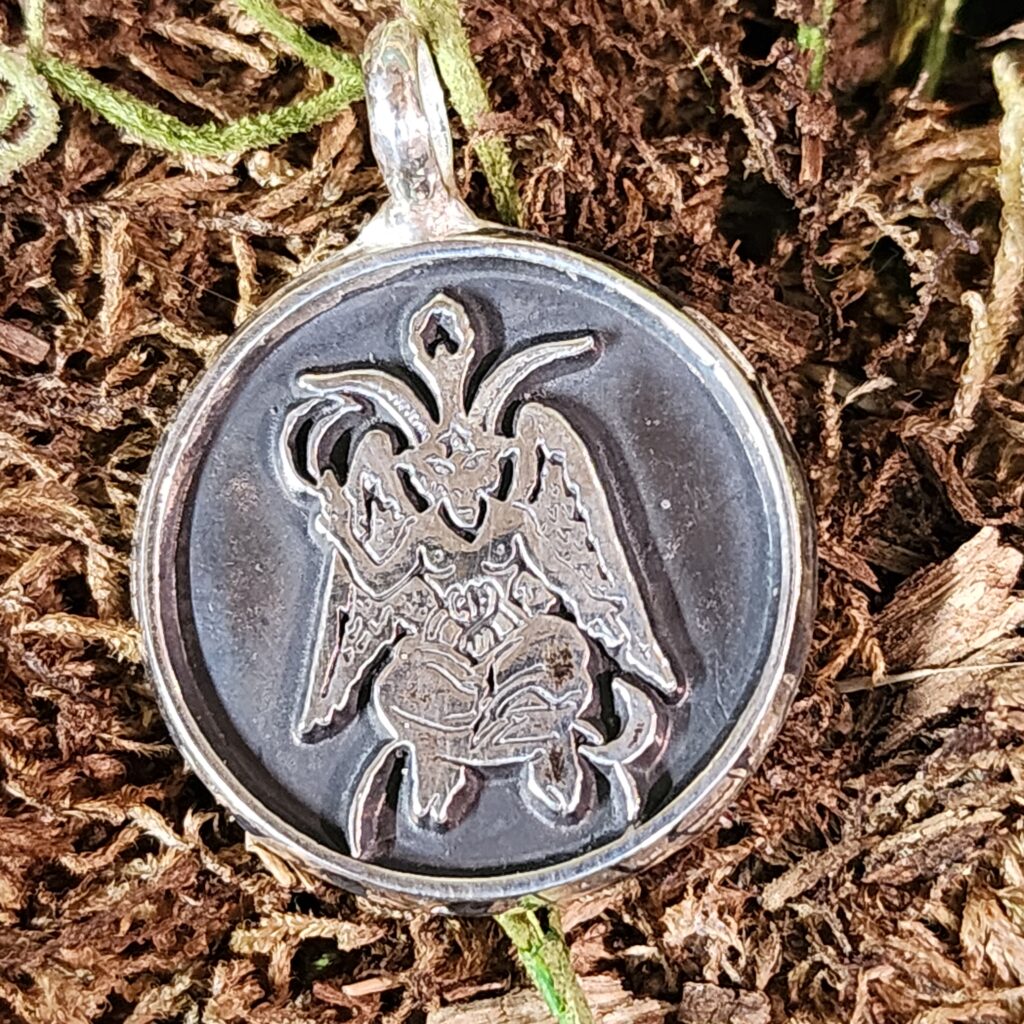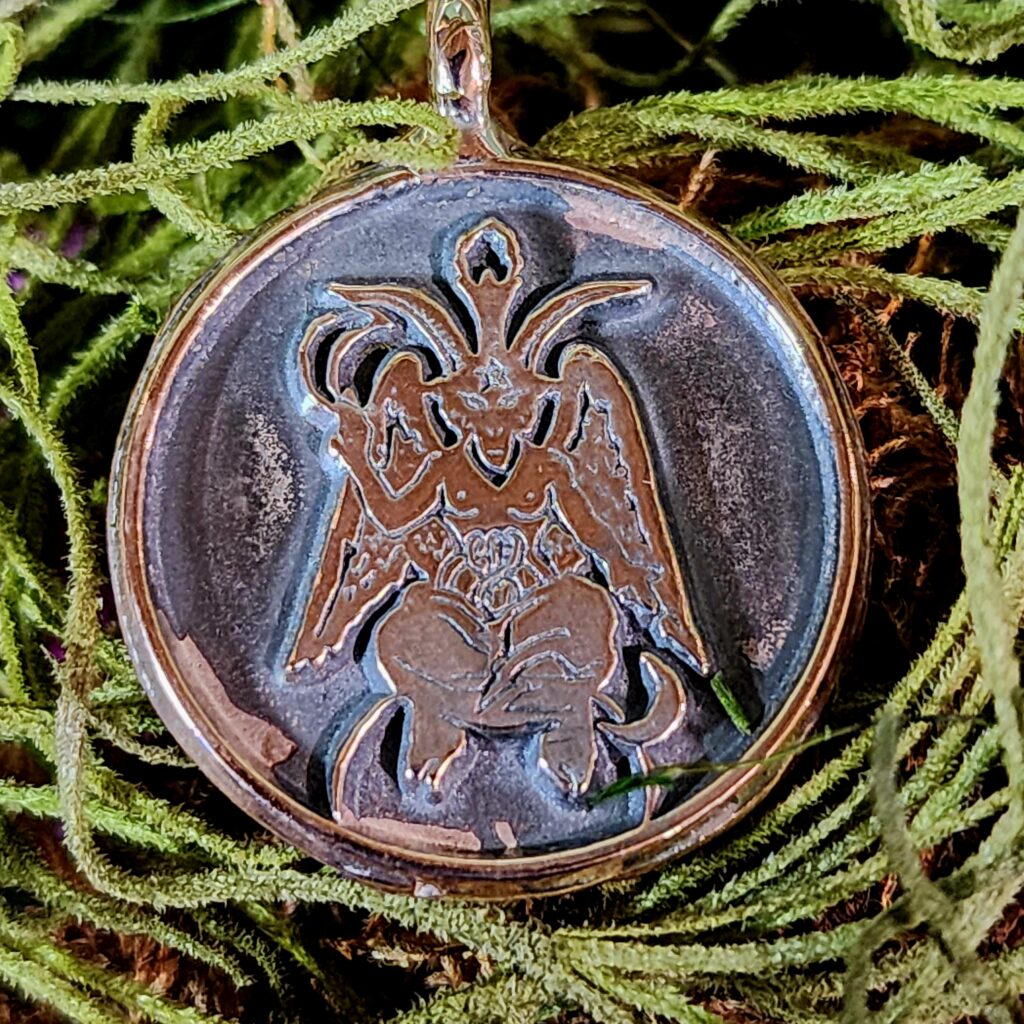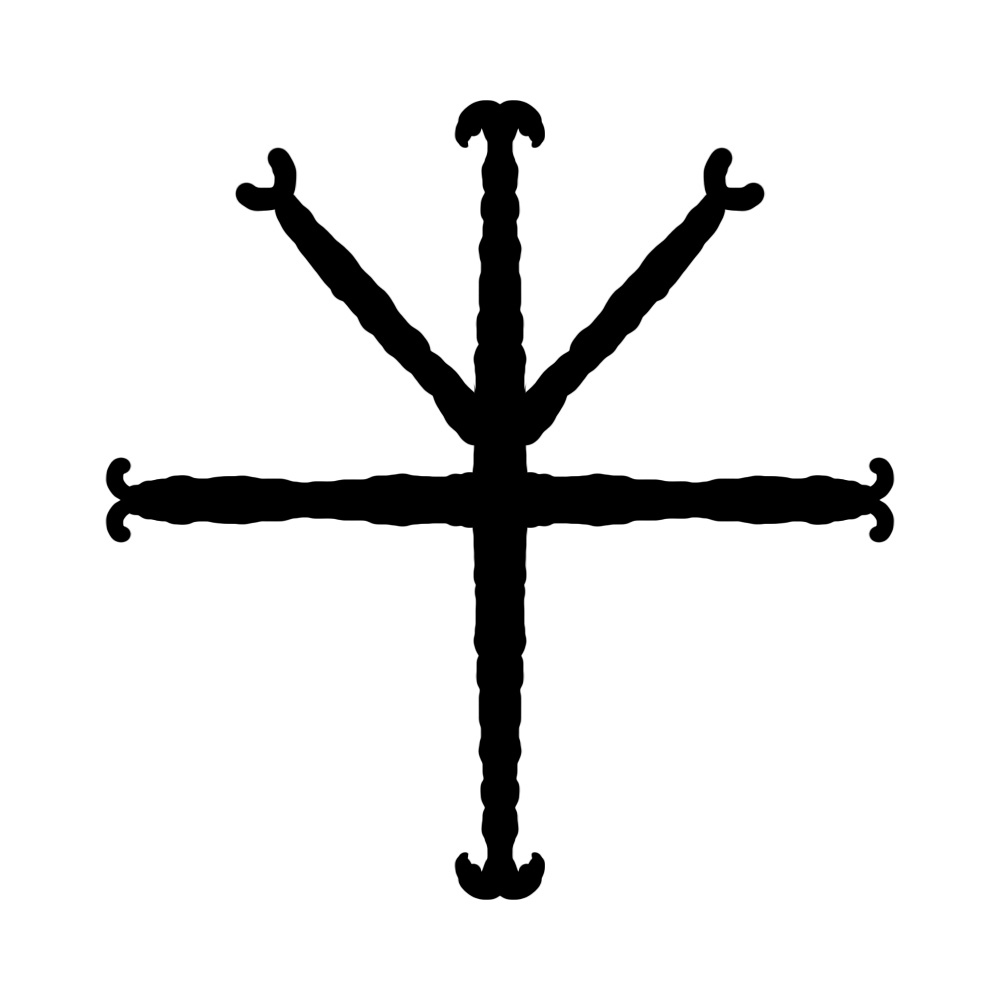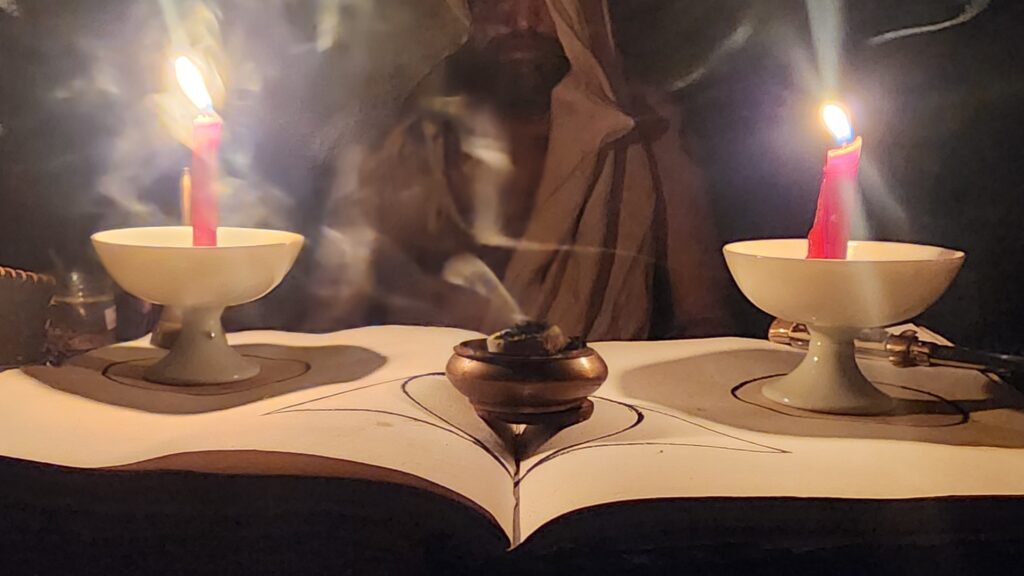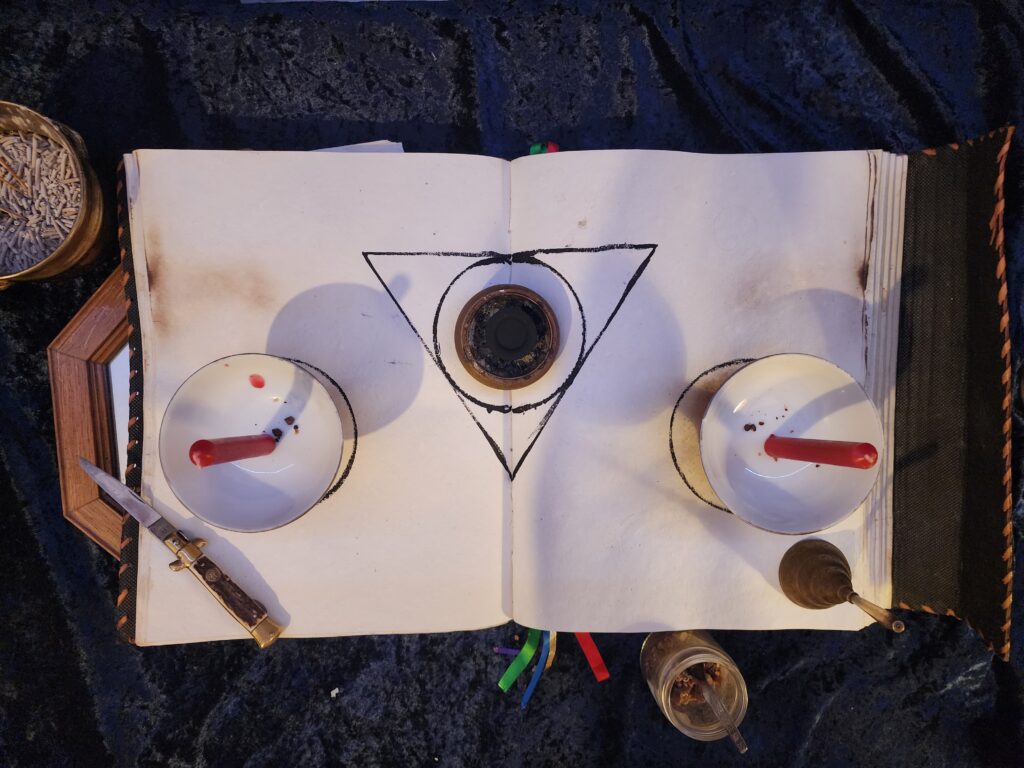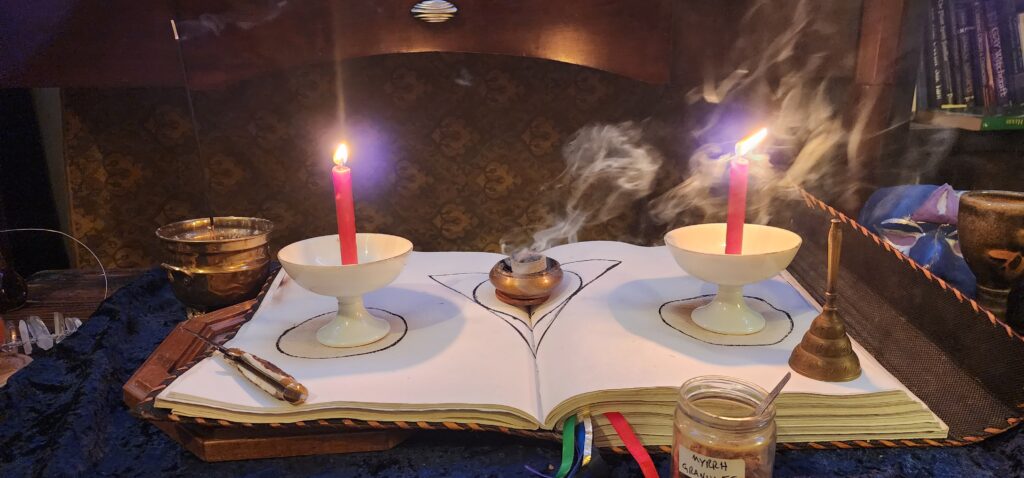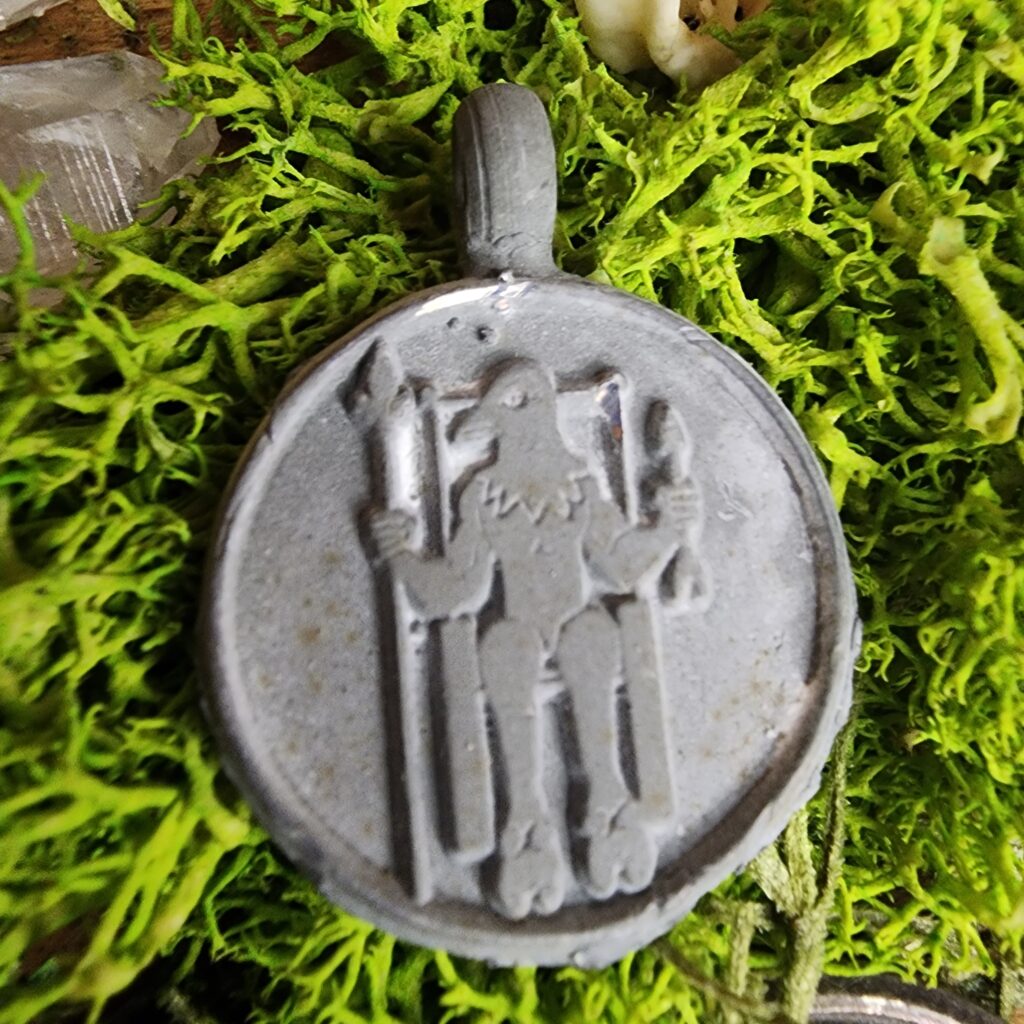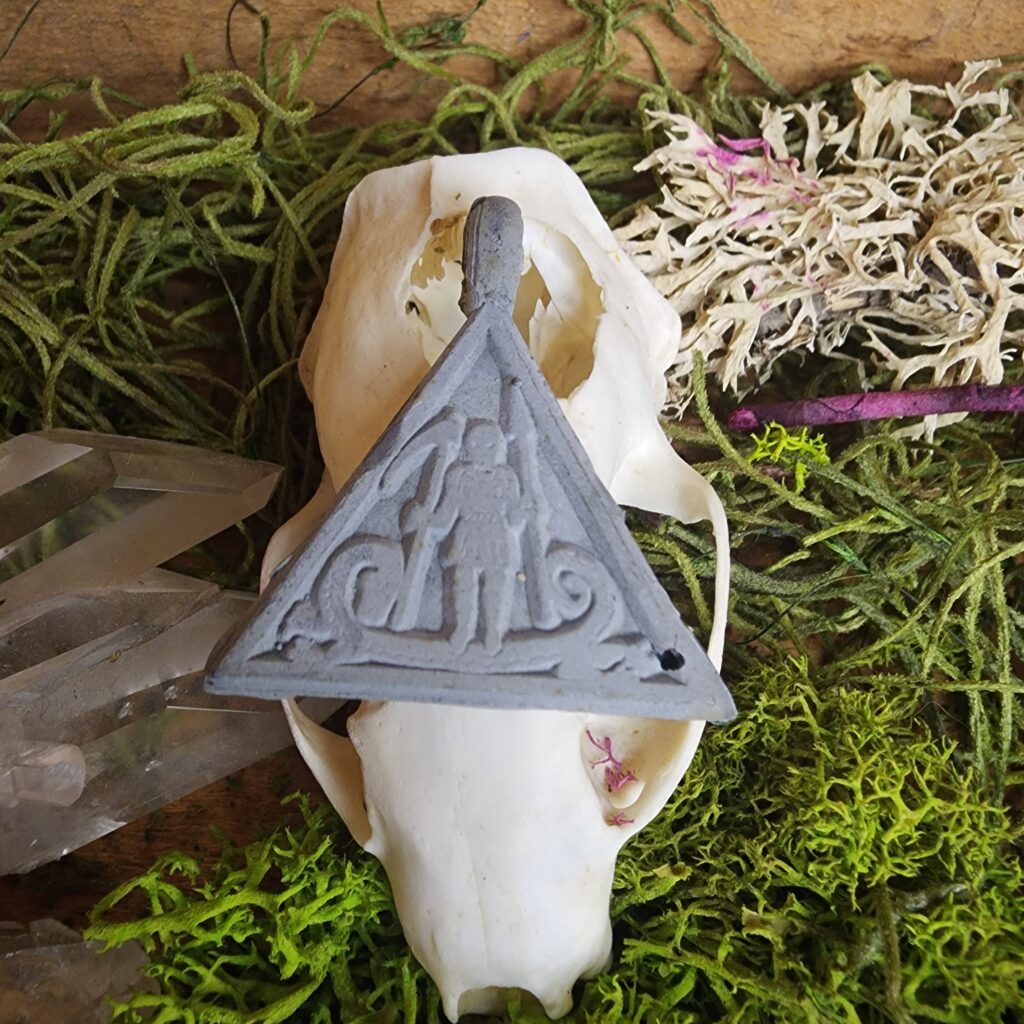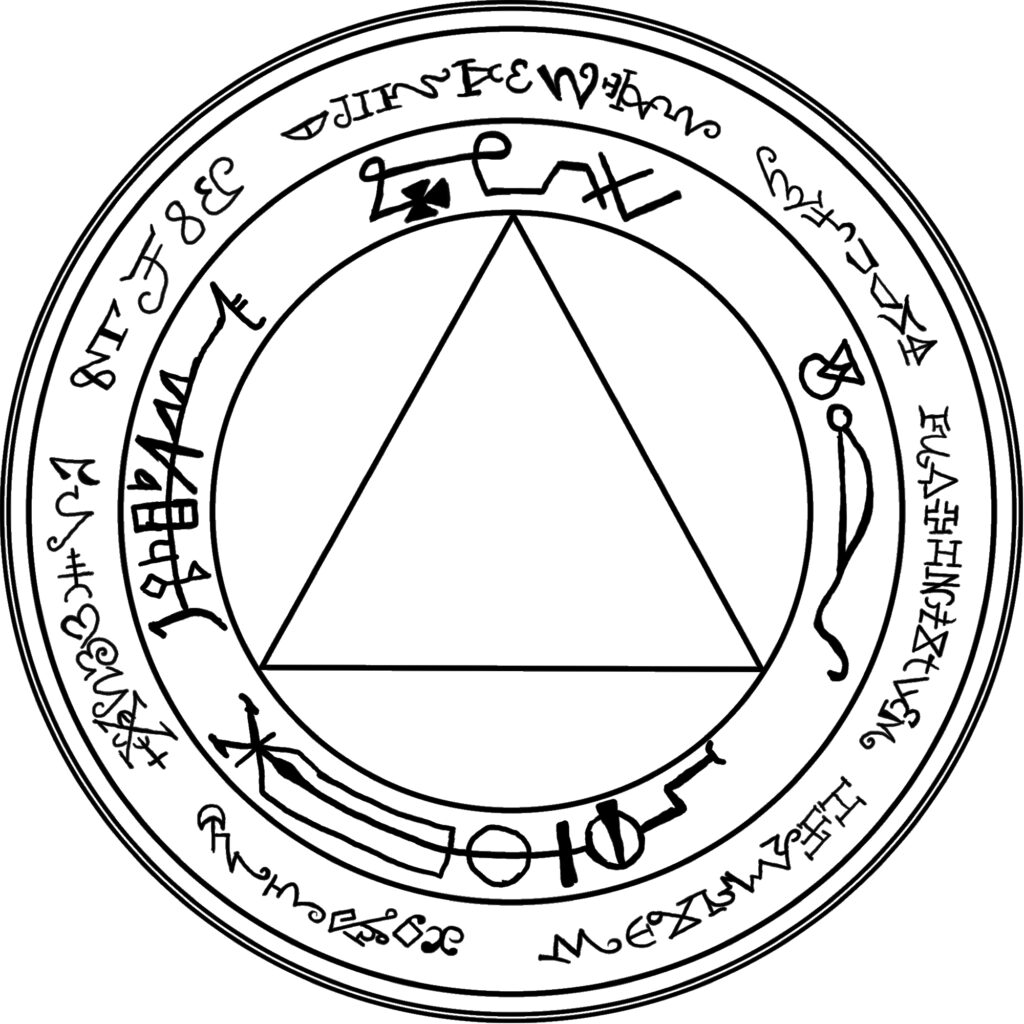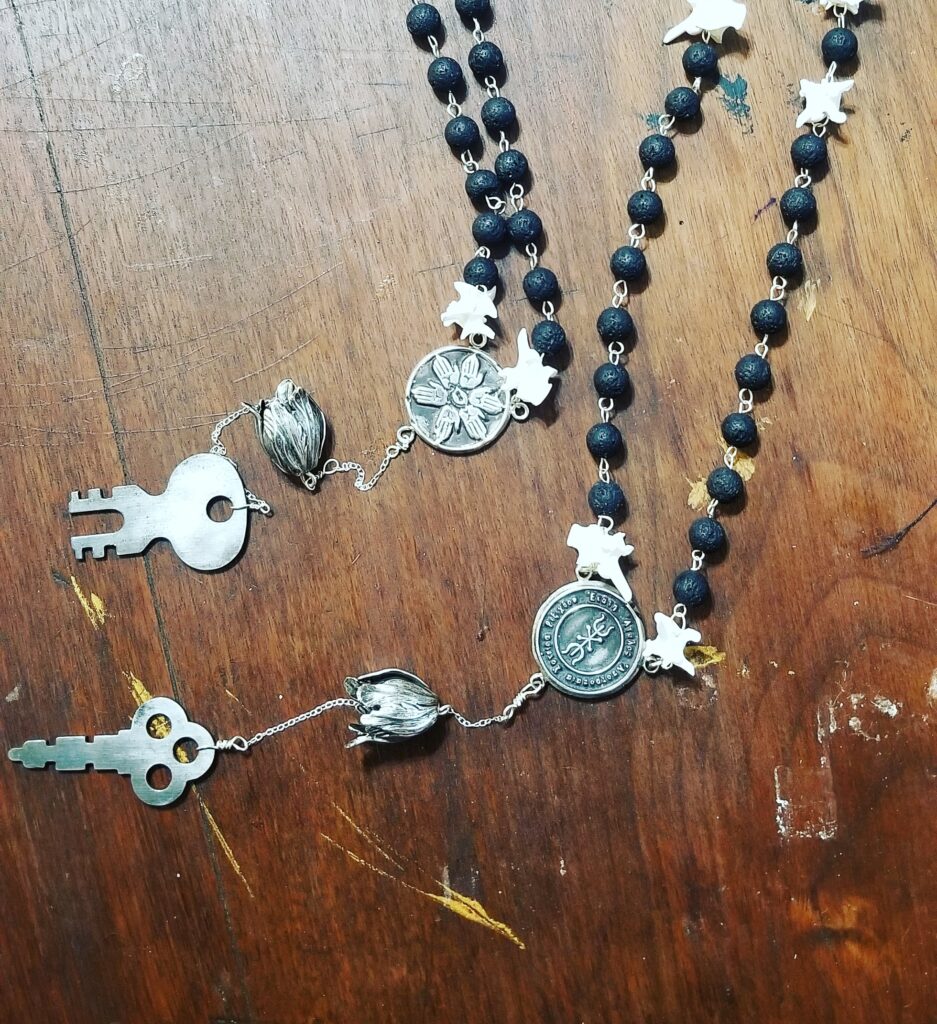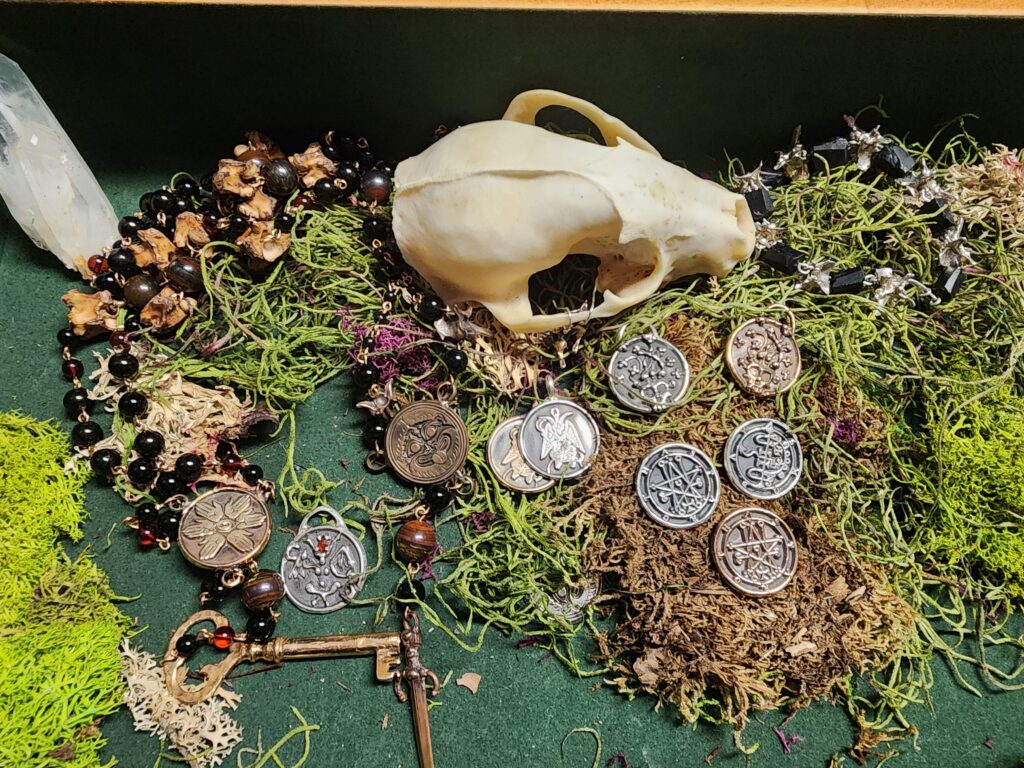
Hail and well met, friends. Thank you for joining me as I finally and proudly present my inaugural Samhain Line: six new designs and three unique pieces of jewelry perfect for spooky season.
Some of these have been in the works for a long time. Some of them were designed exclusively for this line. All of them are fantastic and much-needed additions to the Sorcerer’s Workshop. Would you like a tour?
Devotional Image of Persephone
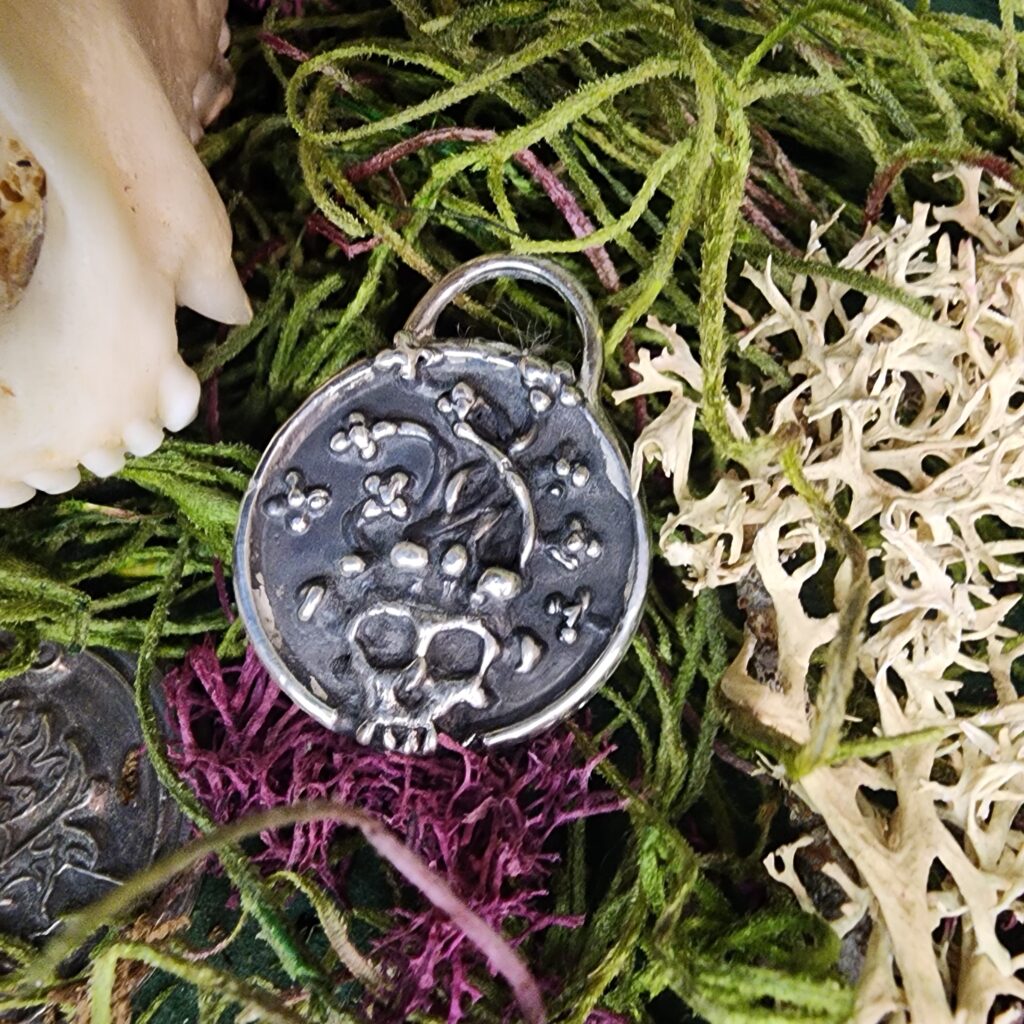
An image of Persephone embracing her three aspects of Dread Queen (the skull), goddess of spring and flowers (the flowering vines), and patron of the immortalizing Eleusinian Mysteries (the skull’s mushrooms crown).
I received this image during an oracular session this spring, not long before Beltane, and is the flagship design of my inaugural Samhain Line.
The pendant is one inch across and 3/16ths of an inch thick, solid and made to last, with a loop that can be used to attach a cord or chain or any kind of bail.
The pendant is available in sterling silver or red bronze.
These pendants are not consecrated. That is your responsibility to perform in accordance with your traditions.
https://www.etsy.com/listing/1573405735/dread-queen-persephone-devotional
Devotional Image of Baphomet
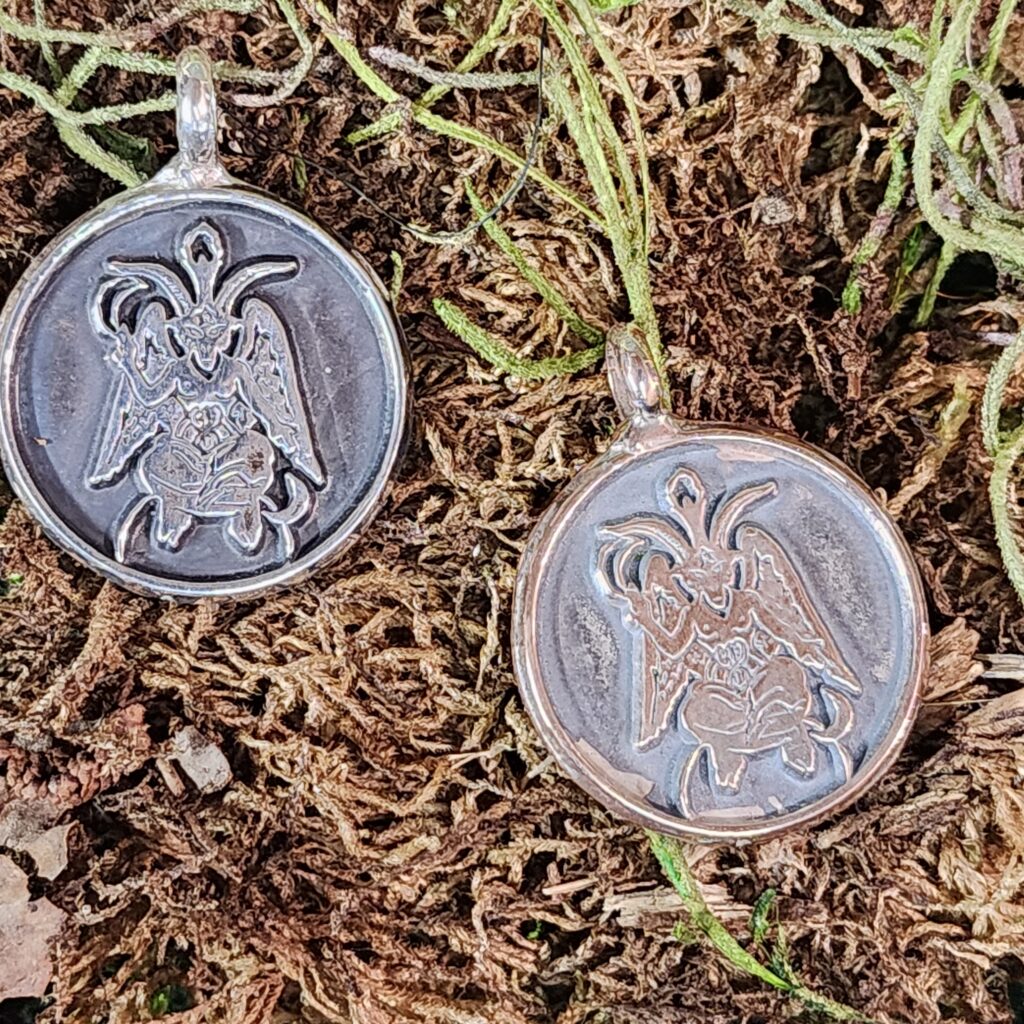
A devotional image in my signature style, featuring my take on Eliphas Levi’s iconic image of Baphomet as the Goat of Mendes.
To me, Baphomet is the queer and genderqueer god/dess of witchcraft and chaos magick. Their sexual and gender ambiguity is the point. Their theriomorphic imagery is the point. The fact that they are on the one hand a newly-revealed divinity and on the other hand share imagery with gods more ancient than the written word are the point. Their passage through modern Gnosticism as a vision of Sophia and/or the God Above God is the point.
* Talisman is one inch in diameter with an image on each side.
* Available as a pendant with an upeye suitable for a 3mm chain or with three rings suitable for stringing as a rosary piece.
* Available in sterling silver, shibuichi (a 3:1 copper:silver art metal alloy), yellow brass, or red bronze.
This piece is not consecrated. That is your responsibility to do in accordance with your tradition or gnosis.
https://www.etsy.com/listing/1577711551/devotional-image-of-baphomet-samhain
Rattlesnake Vertebrae Earrings
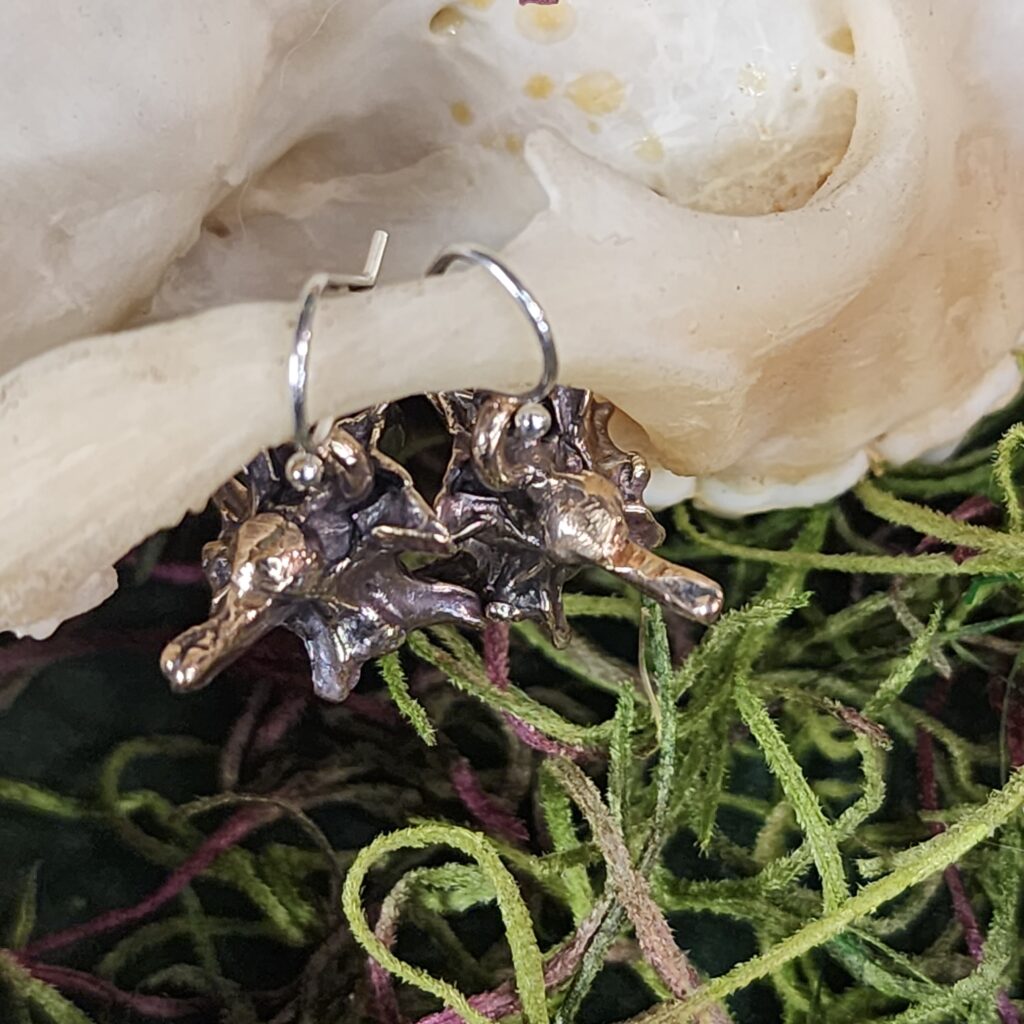
Rattlesnake vertebrae earrings cast in silver or bronze with silver earrwires. The third design from my inaugural Samhain Line, perfect for goths, witches, and other lovers of dark vibes. Molds were taken from genuine rattlesnake vertebrae.
https://www.etsy.com/listing/1569028490/rattlesnake-vertebra-earrings-in-silver
Tourmaline and Sterling Silver Rattlesnake Vertebrae Bracelet
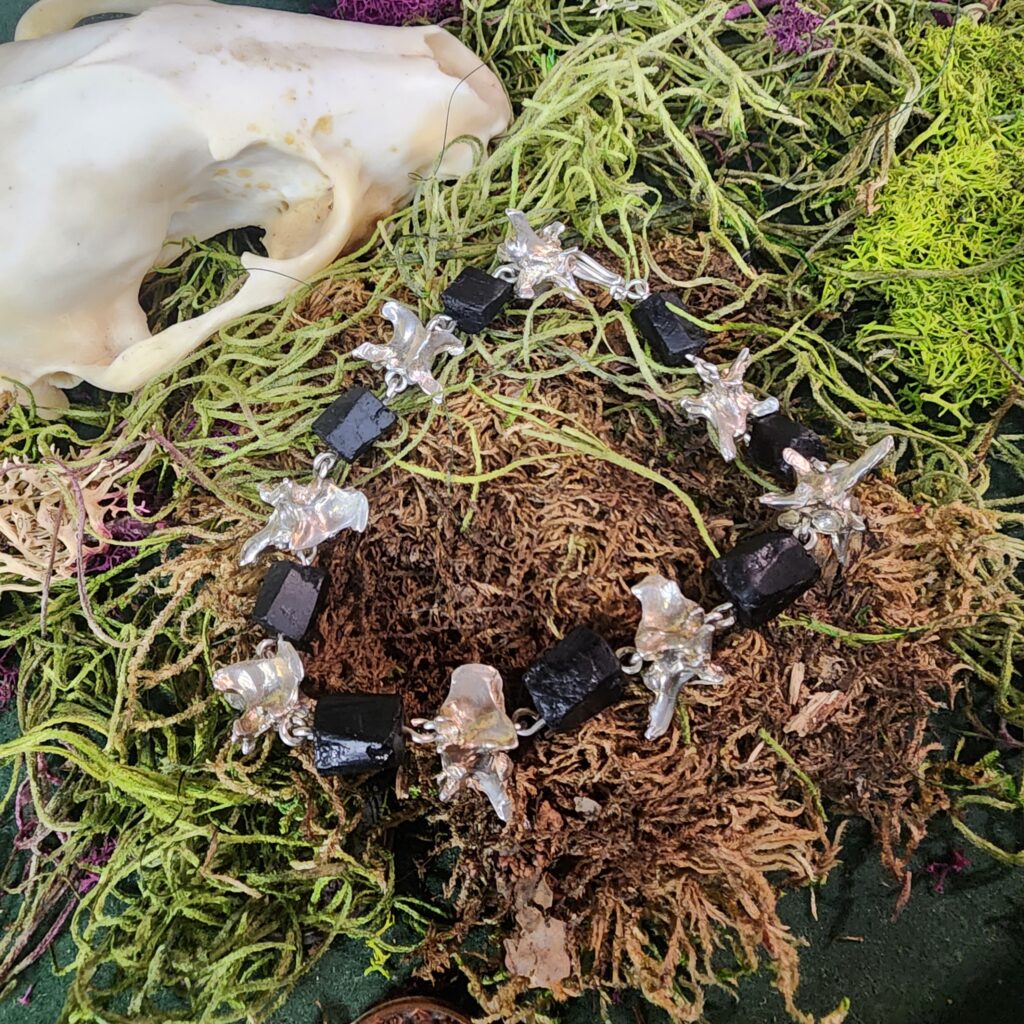
The fourth new design in my inaugural 2023 Samhain Line, this bracelet is made of rough tourmaline beads and cast sterling silver rattlesnake vertebrae strung on silver wire with a hook clasp. These materials and design are ideal for grounding and protection magic, and as a stylish witchy statement piece.
The bracelet is available at lengths from approximately six inches to nine inches. The pictured exemplar with eight tourmaline beads and four pairs of vertebrae is nine inches long; shorter bracelets will consist of fewer beads.
https://www.etsy.com/listing/1584459135/tourmaline-and-sterling-silver
Seal of Astaroth
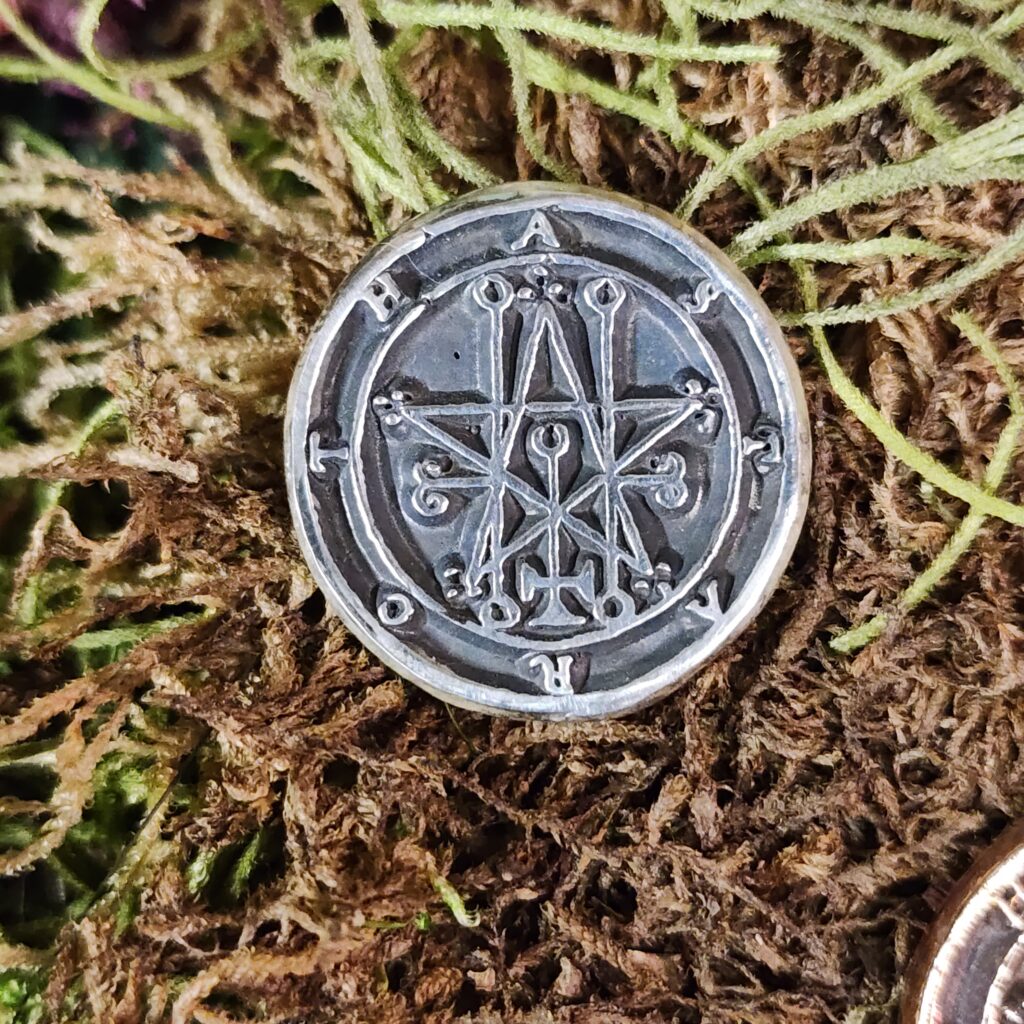
A 1 inch coin depicting the seal of Astaroth as described in the Lesser Key of Solomon, better known as the Goetia. In the words of the anonymous author: “The 29th spirit in order is Named Astaroth, he is a Mighty & strong duke and appeareth in [the] forme of an unbeautifull angel, ridding on an Infernall like dragon, and carring in his right hand a viper (you must not lett him come to neare yu least he doe yu damage by his stinking Breath. Therefore ye Exorcist must hold ye Magicall Ring nere to his face and yt will defend him he giveth true answares of things present past & to come & can discover all secreets; he will declare willingly how ye spirits fell, if desired, & ye reason of his own fall. He can make men wounderfull knowing in all Liberall siences; he rules 40 Legions of spirits, his seal is this, wch weare as a Lamen before yu, or else he will not obey you.”
The front of the coin bears the image of the seal. The reverse may be polished or textured.
Use this talisman seal in your conjurations — traditional or modern — or as the core materia in a prosperity bag.
Work with demons at your own risk.
Each piece is hand-made to order and will include unique variations and blemishes.
https://www.etsy.com/listing/1571906436/astaroth-seal-goetic-coin-talisman
Seal of Asmoday
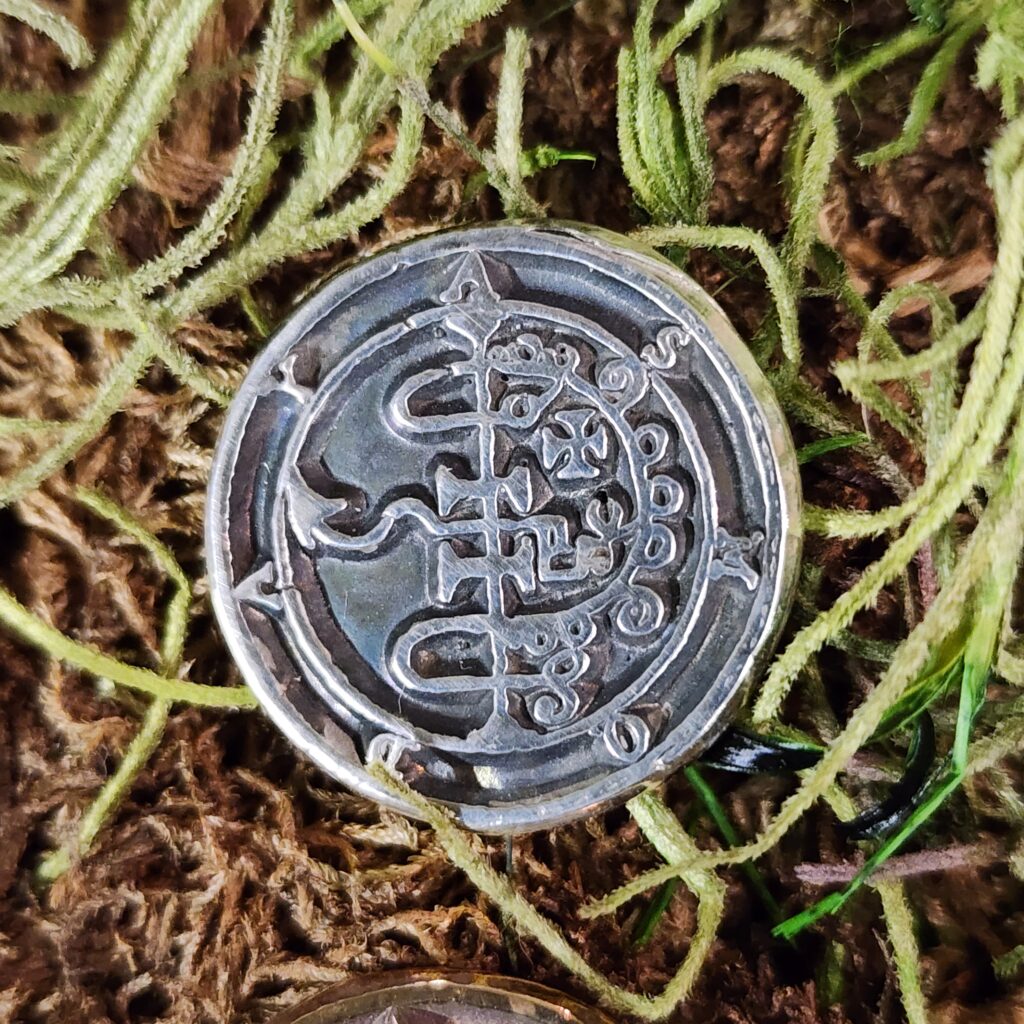
A 1 inch coin depicting the seal of Asmoday as described in the Lesser Key of Solomon, better known as the Goetia. In the words of the anonymous author: “The 32d spirit in order is called Asmoday. he is a great king, strong & powerfull; he appeareth wth 3 heads, whereof ye first is like a Bull The second like a Man, The Third like a Ram, [he appeareth also] with a serpents Taile, Belching or vomitting up flames of fire out of his mouth his feet are webed like a Goose, he sitteth on an Infernall dragon carring a Launce and a flagg in his hands, he is ye first & chifiest under ye power of Amaymon, & goeth before all others: when the Exorcist hath a mind to call him, lett it be abroad, and lett him stand on his feet all ye Time of action, wth his cap of [off], for if it be on, Amaymon will deceive him, and cause all his doeing to be bewrayed, But as soone as ye Exorist [Exorcist] seeth Asmoday in ye shape aforesaid, he shall call him by his Name, saying, thou art Asmoday, & he will not deny it; and by & by he will bow down to ye grownd &c he giveth ye Ring of vertues he teacheth ye art of Arithmitick, geomitry, Astronomy, and all handicrafts36b absolutly; he giveth full and True answares to yr demands, he maketh a man Invisible, he showeth ye place where Treasures layeth, and guardeth it if it be among ye Legions of Amaymon, he governeth 72 Legions of Inferiour spirits, his seal is thus, to be made and worne as a Lamen before [thee] on your Breast.”
The front of the coin bears the image of the seal. The reverse may be polished or textured.
Use this talisman seal in your conjurations — traditional or modern — or as the core materia in a prosperity bag.
Work with demons at your own risk.
Each piece is hand-made to order and will include unique variations and blemishes.
https://www.etsy.com/listing/1586084599/asmoday-seal-goetic-coin-talisman
Unique Devotional Image of Baphomet with Mexican Fire Opal
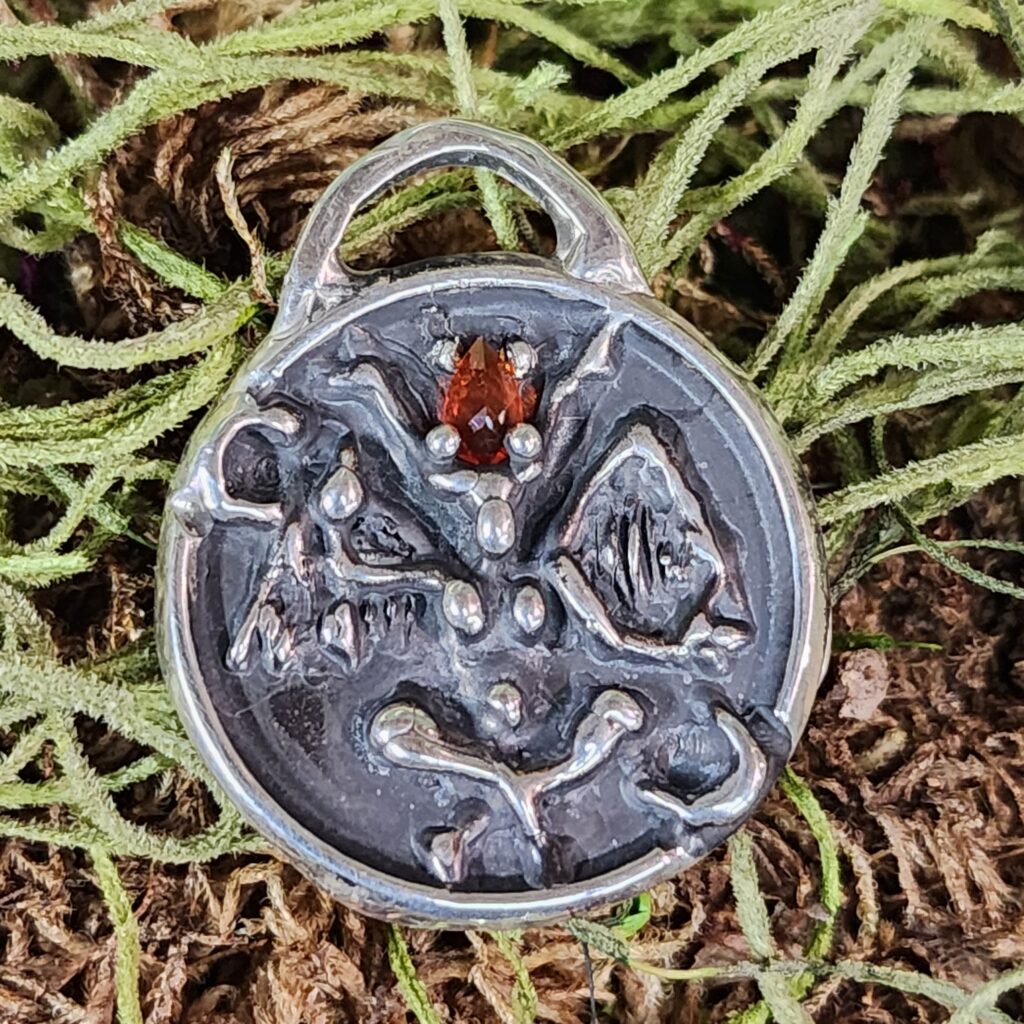
A one-of a kind image of Baphomet cast from a hand-carved wax, with a Mexican fire opal set over their head as the flame of gnosis. This image is, of course, a take on Eliphas Levi’s iconic drawing of Baphomet as the Goat of Mendes. It is also the product of my years of work with the god/dess, who is to me a deeply queer figure of creation – both creator and created.
To me, Baphomet is the queer and genderqueer god/dess of witchcraft and chaos magick. Their sexual and gender ambiguity is the point. Their theriomorphic imagery is the point. The fact that they are on the one hand a newly-revealed divinity and on the other hand share imagery with gods more ancient than the written word are the point. Their passage through modern Gnosticism as a vision of Sophia and/or the God Above God is the point.
The pendant is heavy, and the stone set in strong prongs.
The pendant is one inch across an eight of an inch thick.
I would be happy to add a jumpring to the arch bail at the top if you would prefer that.
It is not yet consecrated. That is your responsibility.
https://www.etsy.com/listing/1577722019/unique-devotional-image-of-baphomet-with
Unique Gorgoneion Prayer Beads and Protection Talisman
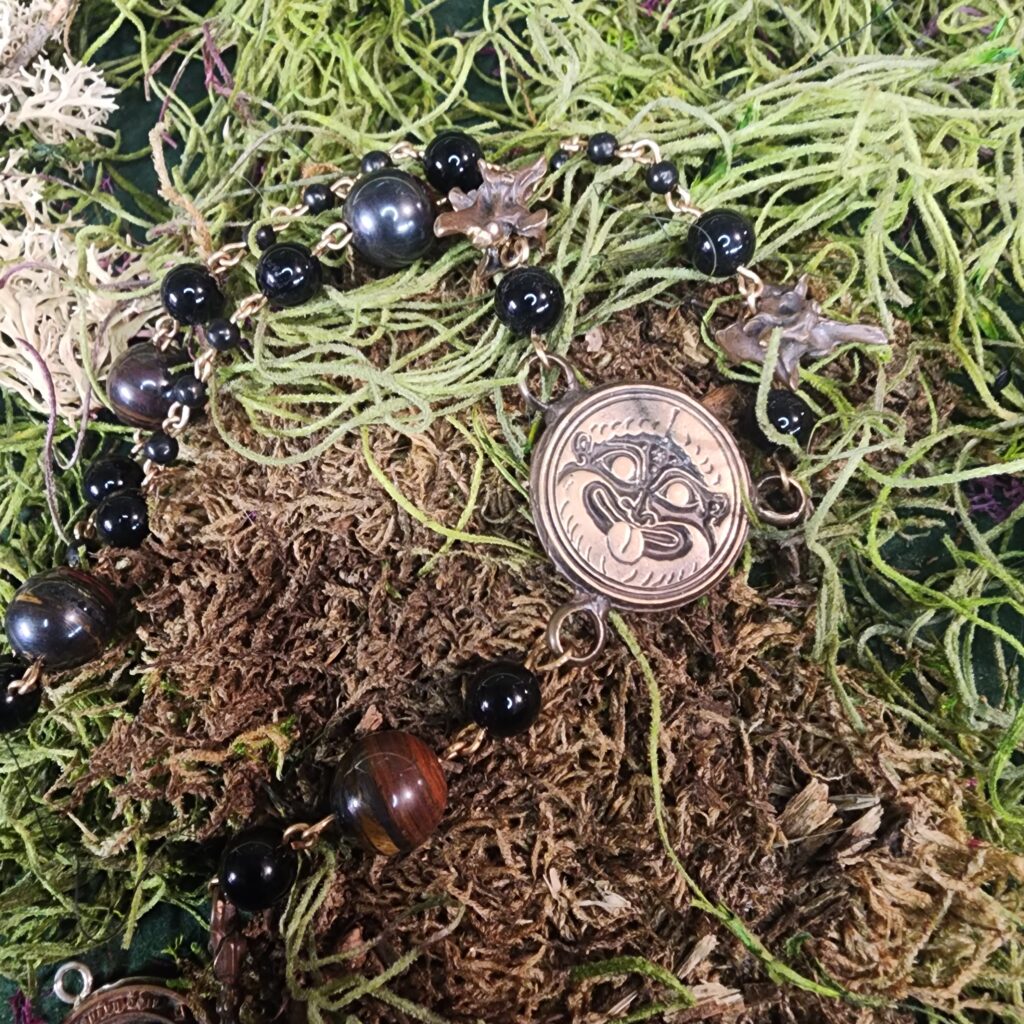
Prayer beads featuring my signature Gorgoneion protection talisman cast in bronze and strung on bronze wire with jet and tiger iron beadsbeads and bronze rattlesnake vertebrae and a bronze sword. These prayer beads were made in trance according to the whims of Spirit and will never be exactly reproduced.
The image of a Gorgon’s face, as seen on the front of the talisman, was a common protection symbol throughout ancient Greece and the Hellenistic world. The back of the talisman bears the names of the three attested Gorgons – Medusa, Sthenno, and Euryale – in Greek. This particular image was done in the Attic style, based particularly the Gorgon images found painted in kylix cups from the 4th Century BCE.
https://www.etsy.com/listing/1568402114/unique-gorgoneion-prayer-beads-and
Unique Hekate Prayer Beads with Bronze Talisman and Key, Genuine Rattlesnake Vertebrae, Tiger Iron, Jet, and Amber Beads
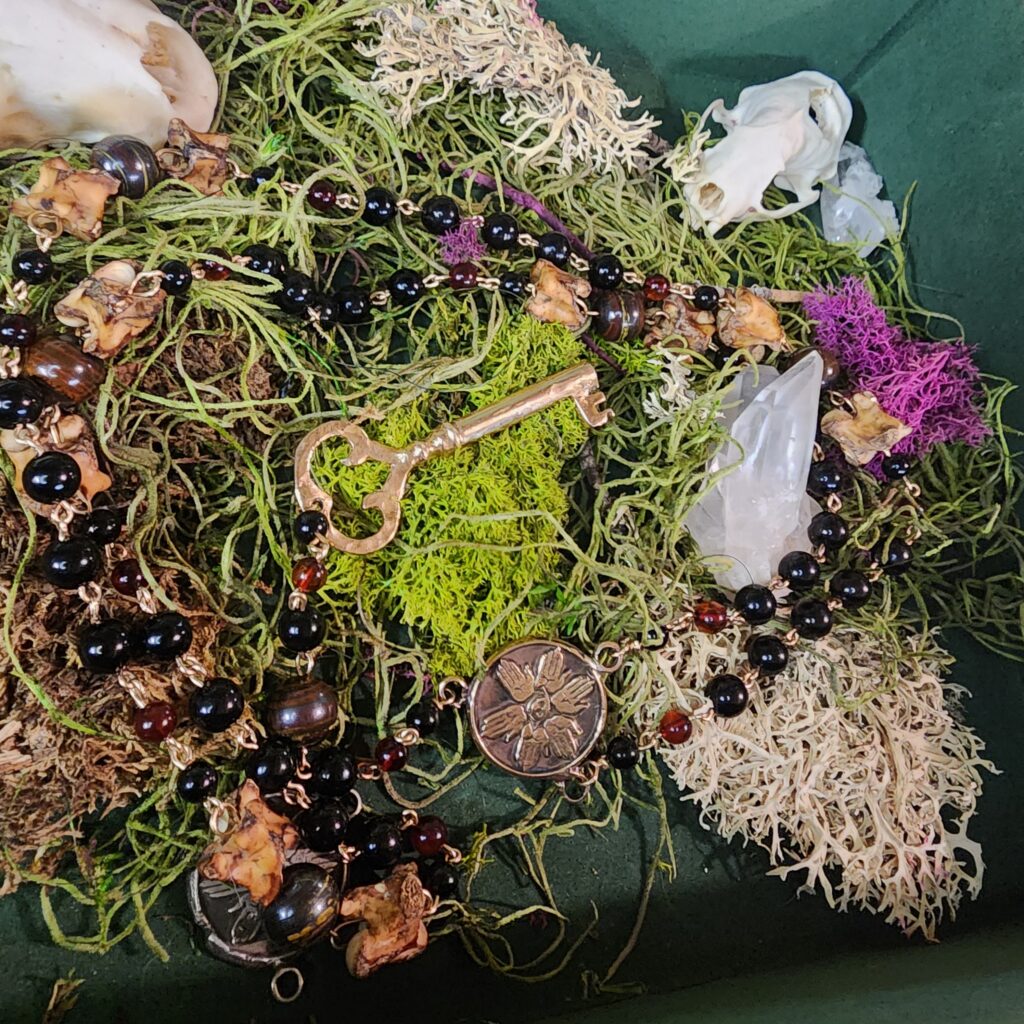
The third and final of the unique pieces in my inaugural 2023 Samhain Line of jewelry.
Prayer beads featuring my signature Eye and Six Hands devotional Hekate talisman and wardrobe key cast in bronze, strung on bronze wire, with genuine rattlesnake vertebrae and beads of tiger iron, jet, and amber. The total bead count is: six 8mm tiger iron beads, ten 10mm rattlesnake vertebrae, thirty-two 3mm jet beads, fourteen 2mm jet beads, and fifteen 2mm amber beads, for a total of seventy-seven beads.
The beads were chosen and strung as the spirit moved me: six sets of nine beads interspaced with five sets of three, with seven beads and a key hanging from the central talisman.
The central talisman is a one inch bronze circle bearing an image of Hekate on one side — “O Six Hands crowning a flaming eye,/ Extending in every direction;” and her crossroads sigil, name, and epithets in Greek — “Hekate, Atalos, Apotropaia, Soteira, Rexichthon” — on the reverse.
The key is two and a half inches long.
The beads are thirty-six inches long with a six and a half inch dongle.
https://www.etsy.com/listing/1584458759/unique-hekate-prayer-beads-with-bronze

